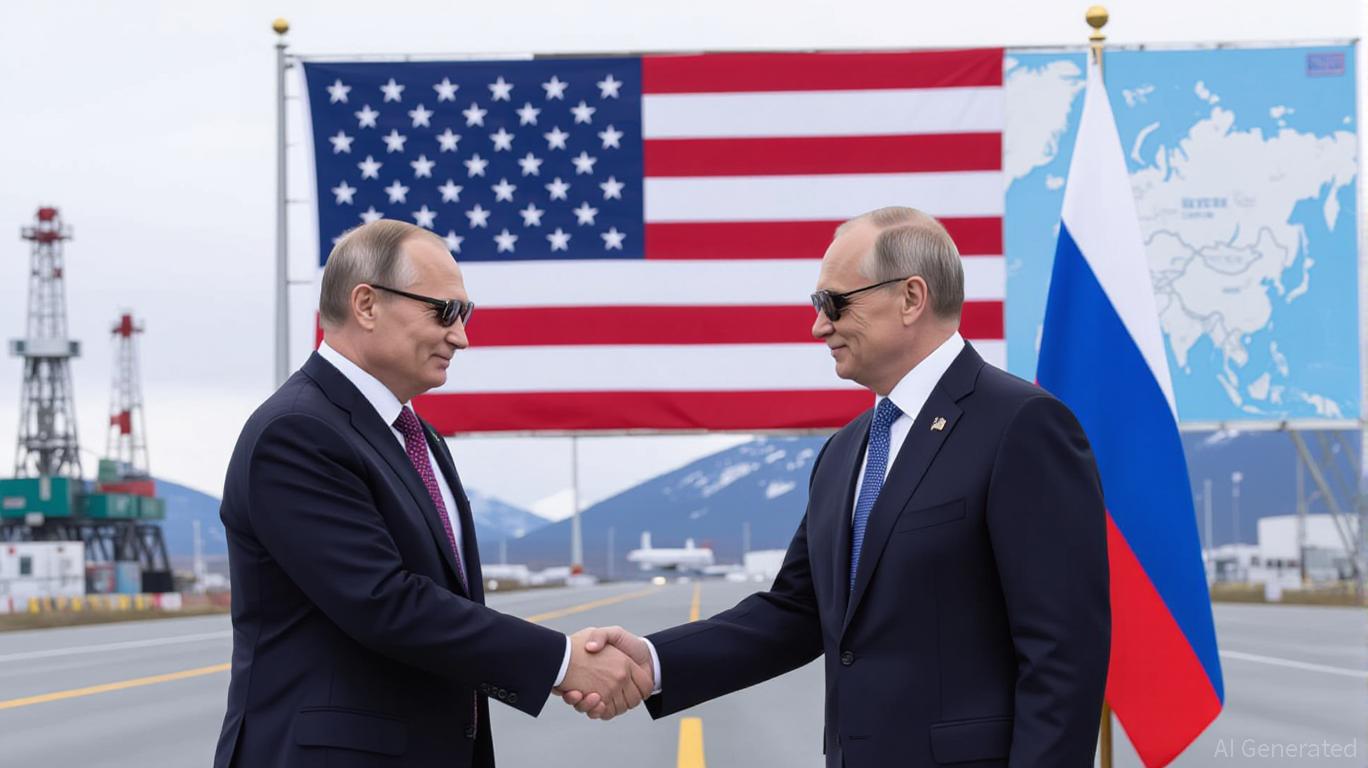
The August 15, 2025, Trump-Putin summit in Alaska has ignited a seismic shift in the global oil market, intertwining geopolitical uncertainty with central bank policy to create a volatile and unpredictable landscape. As the world watches the interplay between sanctions, OPEC+ dynamics, and Federal Reserve rate expectations, investors must navigate a complex web of short-term volatility and long-term structural risks.
Short-Term Volatility: Sanctions, Peace Talks, and Market Sentiment
The summit’s immediate impact hinges on the potential easing or tightening of sanctions on Russian oil exports. A Russia-favored peace deal could lift restrictions, flooding global markets with discounted Russian crude and driving down prices. European gas prices, for instance, could plummet below $8 per MMBtu by 2028/29, while U.S. shale producers face margin erosion. Conversely, a failed summit risks renewed sanctions, triggering a 10–15% spike in Brent crude prices, as seen in historical precedents like the 2022 Ukraine invasion.
Market sentiment is further amplified by the Trump administration’s General License No. 125, which temporarily relaxed sanctions to facilitate the summit. This created a “bullish risk premium,” with oil prices climbing 2% to a one-week high ahead of the meeting. However, the license expires on August 20, introducing a cliffhanger that could destabilize markets if extended or revoked.
Long-Term Structural Risks: OPEC+ and Global Supply-Demand Imbalances
While geopolitical tensions dominate headlines, OPEC+ remains a critical structural force. The alliance’s decision to increase output by 2.5 million barrels per day in 2025 has created a well-supplied market, countering the IEA’s revised forecast of slower demand growth. This surplus, coupled with rising U.S. shale production and non-OPEC+ output from Guyana and Brazil, suggests oil prices may remain under downward pressure unless geopolitical disruptions resurface.
However, the IEA warns of a potential 2.96 million barrel-per-day inventory surplus in 2026, which could force OPEC+ to reconsider production cuts. For investors, this highlights the need to monitor OPEC+ cohesion and its ability to balance supply with demand amid shifting geopolitical priorities.
Central Bank Policy: The Fed’s Rate Cut and Inflation Dilemma
The Federal Reserve’s anticipated September 2025 rate cut adds another layer of complexity. While a 50-basis-point reduction could stimulate economic growth and oil demand, rising U.S. producer prices—up 3% year-over-year—pose a risk of inflationary surprises. This dilemma mirrors the 2023 rate-cut cycle, where markets initially rallied but later faced volatility as inflation persisted.
Investors must also consider the interplay between monetary policy and energy markets. A dovish Fed could prop up oil prices by boosting industrial activity, while a hawkish pivot might curb demand growth. The key is to hedge against divergent outcomes, such as allocating 10–15% of energy portfolios to U.S. shale ETFs (e.g., ERY) and gold, which historically performs well during geopolitical uncertainty.
Investment Strategy: Diversification and Hedging in a Multipolar World
Given the dual forces at play, a diversified and agile approach is essential:
1. Hedge Energy Portfolios: Allocate to U.S. shale ETFs and gold to offset risks from sanctions shifts or OPEC+ volatility.
2. Monitor Emerging Markets: Prioritize economies with diversified structures (e.g., South Korea’s tech sector, Israel’s defense industry) over oil-dependent nations.
3. Short-Term Plays: Consider LNG exporters like Cheniere Energy (LNG) and Shell (SHEL) if sanctions tighten, or European utilities if Russian gas returns.
4. Geopolitical Safeguards: Track U.S. Treasury announcements and Asian energy importer performance (e.g., Reliance Industries, CNOOC) for early signals of trade disruptions.
Conclusion: Navigating the Uncertain Path Forward
The post-Trump-Putin summit world is defined by duality: a fragile peace could stabilize energy markets but undermine U.S. LNG interests, while prolonged conflict risks global energy insecurity. Central bank policy, meanwhile, remains a wildcard, with the Fed’s rate decisions poised to influence both demand and inflation trajectories.
For investors, the path forward lies in balancing short-term agility with long-term resilience. By hedging against geopolitical shocks, diversifying across sectors, and closely monitoring OPEC+ and Fed actions, portfolios can weather the storm of uncertainty and position for opportunities in a multipolar energy landscape.
